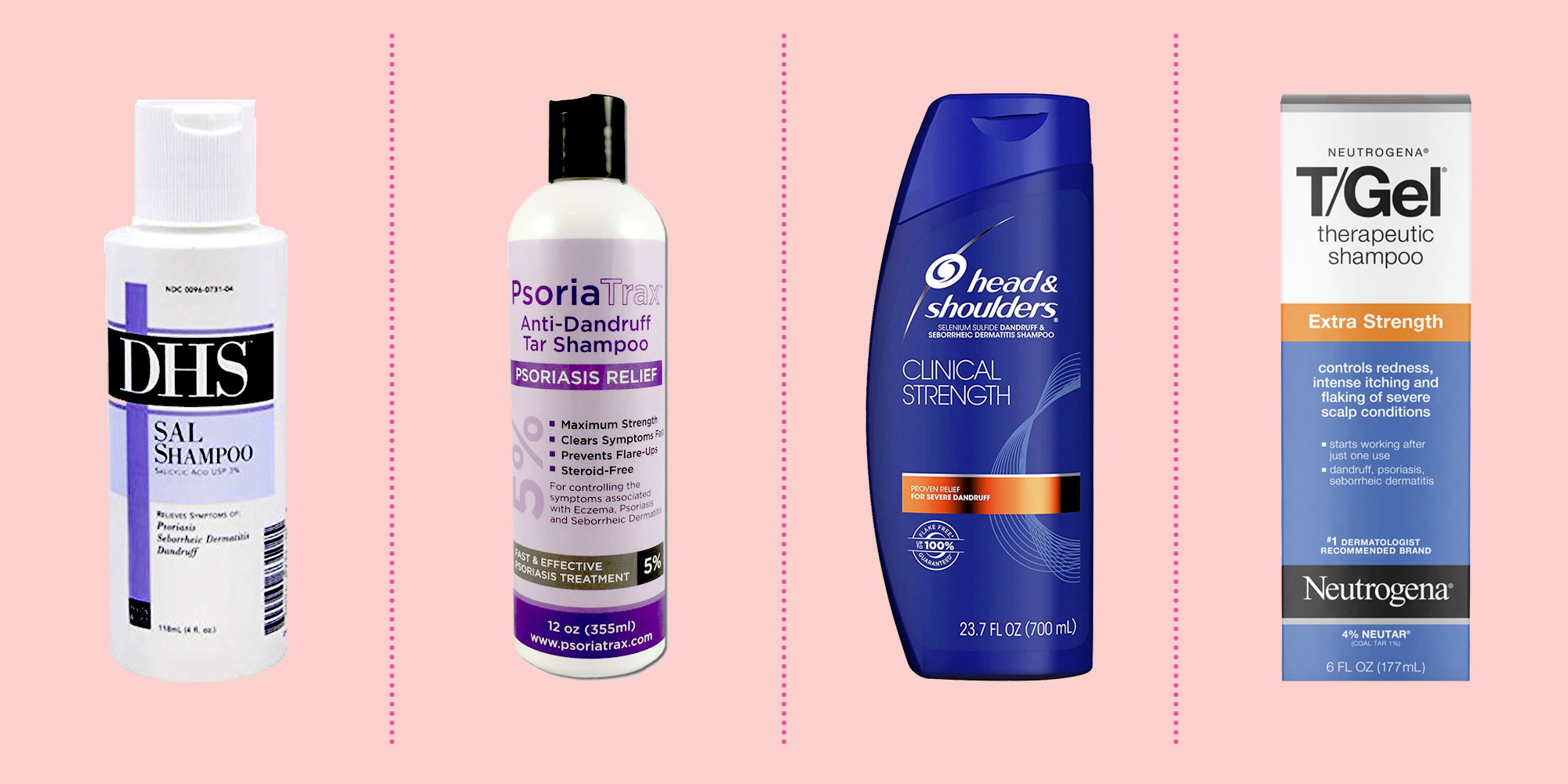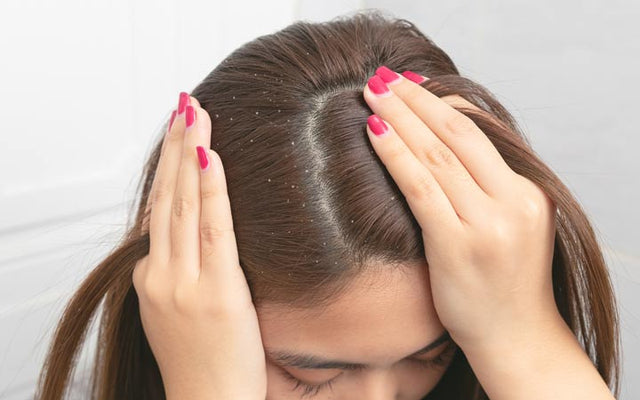Drandruff in Men & Women
What are the causes of drandruff in men and women?
Dandruff, a common scalp condition, can affect both men and women. It is characterized by the shedding of small, white or gray flakes of dead skin from the scalp. While the exact causes of dandruff can vary from person to person, several factors are known to contribute to its development:
Malassezia: This is a type of yeast that naturally resides on the scalp and feeds on the oils produced by hair follicles. In some individuals, an overgrowth of Malassezia can lead to irritation and increased skin cell turnover, resulting in dandruff.
Oily or Dry Scalp: Both excessively oily and excessively dry scalps can be prone to dandruff. For those with oily scalps, the excess oil can provide an environment for Malassezia to thrive. On the other hand, a dry scalp can lead to flaking and dandruff as well.
Skin Conditions: Certain skin conditions like psoriasis, eczema, and seborrheic dermatitis can cause dandruff. These conditions can lead to inflammation and increased skin cell turnover on the scalp.
Shampooing Habits: Infrequent or inadequate shampooing can allow a buildup of oil, dead skin cells, and product residues on the scalp, contributing to dandruff.
Sensitivity to Hair Care Products: Some individuals may be sensitive or allergic to ingredients in their hair care products, such as shampoos, conditioners, or hair styling products. This sensitivity can lead to scalp irritation and dandruff.
Diet and Lifestyle: Poor nutrition and certain lifestyle factors, such as stress and lack of sleep, can weaken the immune system and affect overall skin health, potentially increasing the risk of dandruff.
Climate and Weather: Dandruff may worsen in cold, dry weather due to reduced humidity, which can dry out the scalp. In contrast, hot and humid weather can exacerbate dandruff in individuals with oily scalps.
Hormonal Changes: Hormonal fluctuations, such as those that occur during puberty, pregnancy, or menopause, can affect oil production in the skin and may contribute to dandruff.
Age: Dandruff is more common in adolescence and adulthood and tends to decrease with age.
It’s important to note that dandruff is a common condition and is usually not a serious medical problem. Most cases can be effectively managed with proper hair and scalp care, including regular shampooing with an anti-dandruff shampoo. If dandruff persists despite over-the-counter treatments or is associated with other concerning symptoms, it’s advisable to consult a dermatologist or healthcare professional for a thorough evaluation and appropriate treatment recommendations.
How to get rid of Malassezia?
Malassezia is a type of yeast that naturally resides on the skin, including the scalp, and it’s a common part of the human microbiome. In most cases, Malassezia is harmless and even beneficial, but in some individuals, it can lead to skin conditions such as dandruff, seborrheic dermatitis, or fungal acne. If you suspect an overgrowth of Malassezia is causing skin issues, here are some steps you can take to manage it:
- Antifungal Shampoos: Use shampoos containing active ingredients known to combat Malassezia overgrowth. These ingredients may include:
- Ketoconazole: A widely used antifungal agent found in many over-the-counter and prescription shampoos.
- Selenium sulfide: Another common antifungal found in some dandruff shampoos.
- Zinc pyrithione: This ingredient helps control Malassezia growth and is often used in dandruff shampoos.
- Tar-based shampoos: Coal tar-based shampoos can slow down skin cell turnover and reduce Malassezia’s food source.
Regular Shampooing: Wash your hair regularly with an antifungal shampoo. The frequency of shampooing will depend on your specific condition and how your skin responds, but it’s often recommended to start with at least twice a week.
Scalp Care: Gently massage the shampoo into your scalp, allowing it to sit for a few minutes before rinsing. This gives the active ingredients time to work. Be gentle to avoid scalp irritation.
Maintain Good Hygiene: Keep your hair and scalp clean. Avoid using hair products that can create a greasy or oily scalp environment that encourages Malassezia growth.
Avoid Triggering Factors: Identify and avoid factors that exacerbate Malassezia-related conditions, such as stress, excessive sweating, and hot, humid environments.
Dietary Considerations: Some research suggests that diet may play a role in Malassezia-related skin conditions. Reducing sugar and processed food intake and incorporating more probiotic-rich foods might help in some cases.
Consult a Dermatologist: If over-the-counter treatments do not provide relief or if you have a severe or persistent skin condition, it’s essential to consult a dermatologist. They can provide a proper diagnosis and recommend prescription-strength treatments, if necessary.
Prescription Medications: In more severe cases, a dermatologist may prescribe topical or oral antifungal medications to combat Malassezia overgrowth.
It’s important to note that while Malassezia can contribute to certain skin conditions, it is a normal part of the skin microbiome, and complete eradication may not be necessary or even possible. The goal is typically to manage its population to a level that does not cause skin issues. Always follow the advice of a healthcare professional when treating any skin condition or using medicated shampoos or treatments, as they can provide personalized recommendations based on your specific condition.
How to Cure Psoriasis, Eczema, and Seborrheic dermatitis?

Curing chronic skin conditions like psoriasis, eczema, and seborrheic dermatitis can be challenging, as these conditions typically do not have a permanent cure. However, they can often be managed effectively with proper treatment and lifestyle changes. It’s essential to consult a dermatologist or healthcare professional for a personalized treatment plan. Here are some general guidelines for managing these skin conditions:
Psoriasis:
- Topical Treatments: Dermatologists often prescribe topical corticosteroids, vitamin D analogs, retinoids, or calcineurin inhibitors to reduce inflammation and slow skin cell growth.
- Phototherapy (Light Therapy): Some people find relief with UVB or PUVA therapy, which involves controlled exposure to ultraviolet light.
- Oral or Injectable Medications: In more severe cases, systemic medications like methotrexate, cyclosporine, or biologics may be prescribed to modulate the immune system.
- Lifestyle Management: Avoid triggers like stress, smoking, and excessive alcohol consumption, as they can exacerbate psoriasis symptoms.
- Moisturize: Use moisturizers regularly to prevent dry skin and reduce itching.
Eczema (Atopic Dermatitis):
- Topical Steroids or Non-Steroidal Creams: Corticosteroid creams and non-steroidal options like calcineurin inhibitors can help manage inflammation.
- Emollients: Regular use of emollient creams or ointments can help maintain skin hydration.
- Avoid Triggers: Identify and avoid triggers like allergens, harsh soaps, and stress.
- Prescription Medications: In severe cases, a doctor may prescribe systemic medications like oral corticosteroids, immunosuppressants, or biologics.
- Wet Dressings: In some cases, wet wrap therapy can provide relief by applying medicated creams under wet bandages.
Seborrheic Dermatitis:
- Anti-Dandruff Shampoos: Use shampoos containing active ingredients like ketoconazole, selenium sulfide, or zinc pyrithione. These can help manage flaking and inflammation.
- Topical Antifungal Creams: For affected skin areas other than the scalp, over-the-counter or prescription antifungal creams may be recommended.
- Gentle Cleansing: Use mild, fragrance-free cleansers to avoid skin irritation.
- Limit Hot Water: Hot water can exacerbate symptoms, so use lukewarm water for bathing.
- Lifestyle Changes: Stress management and a balanced diet can help reduce flare-ups.
In all cases, it’s crucial to follow your dermatologist’s advice, as treatment plans can vary based on the severity of the condition and individual factors. Additionally, maintaining a consistent skincare routine, staying hydrated, and avoiding harsh chemicals or irritants can help manage symptoms and prevent flare-ups.
While there may not be a permanent cure for these skin conditions, many people can achieve long-term remission or symptom control with appropriate treatment and self-care measures. Regular follow-up with a healthcare provider is essential to monitor progress and adjust treatment as needed.
References
- Mayo Clinic: The Mayo Clinic website offers comprehensive information on various medical conditions, including dandruff. You can find articles and resources there.
Website: Mayo Clinic - Dandruff
- WebMD: WebMD provides articles and information on a wide range of health topics, including dandruff.
Website: WebMD - Dandruff
- National Institute of Arthritis and Musculoskeletal and Skin Diseases (NIAMS): The NIAMS provides information on various skin conditions, including dandruff.
Website: NIAMS - Dandruff
- American Academy of Dermatology (AAD): The AAD website often has resources and articles related to skin conditions, including dandruff.
Website: AAD - Dandruff
